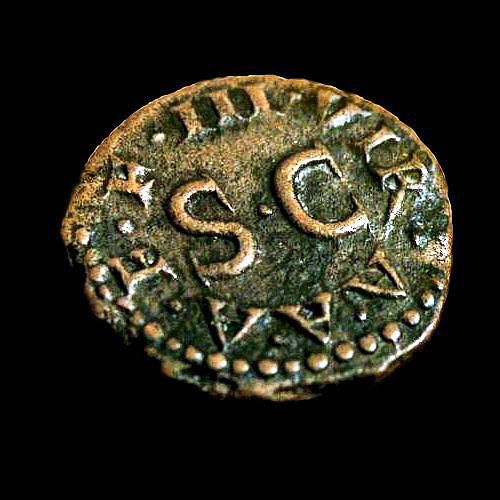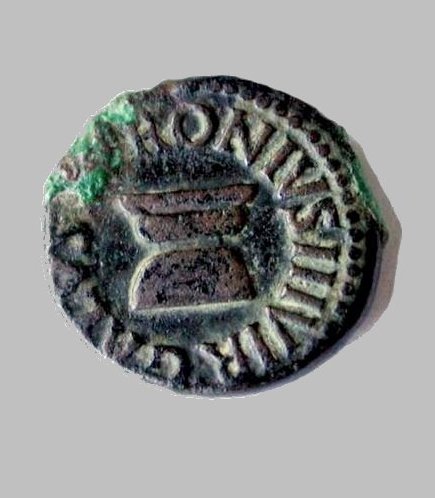

AE quadrans, Augustus 9 BC |
 |
|
Obv. The abbreviation III. VIR. A. A. A. F. F. around a large SC refers to the moneyers collectively known as the tresviri monetalis - the tresviri aere argento auro flando feriundo (the three men for striking and casting bronze, silver and copper coins). Julius Caesar added a fourth mint official in 44 BC. Rev. Lituus and simpulum, LAMIA SILIVS ANNIVS. Coinage bearing the names of the moneying magistrates disappeared after 4 BC. Imperial coinage displayed on the obverse the portrait of the emperor and on the reverse usually recorded the emperor's achievements and policies. The quadrans was introduced in 9 BC with the most common obverse displaying the letters SC (senatus consulto - by decree of the senate) with the names and office of two of the moneyers. The reverse usually displayed an altar or sacrificial implements and the names of the other two moneyers of the college. |
AE quadrans, Augustus 5 BC |
 |
 |
| Obv. MESALLA SISENNA A A A F F, legend around large S. C. Moneyers Apronius, Galus, Messalla, and Sisenna. Rev. GALVS APRONIVS III VIR, altar. |
AE quadrans, Augustus 5 BC |
 |
 |
| Obv. AAAFF APRONIVS, legend around large S. C. Moneyers Apronius, Galus, Messalla, and Sisenna. Rev. MESALLA SISENNA, altar. |
| Republican | Imperatorial | |
Greek Imperial | Byzantine |